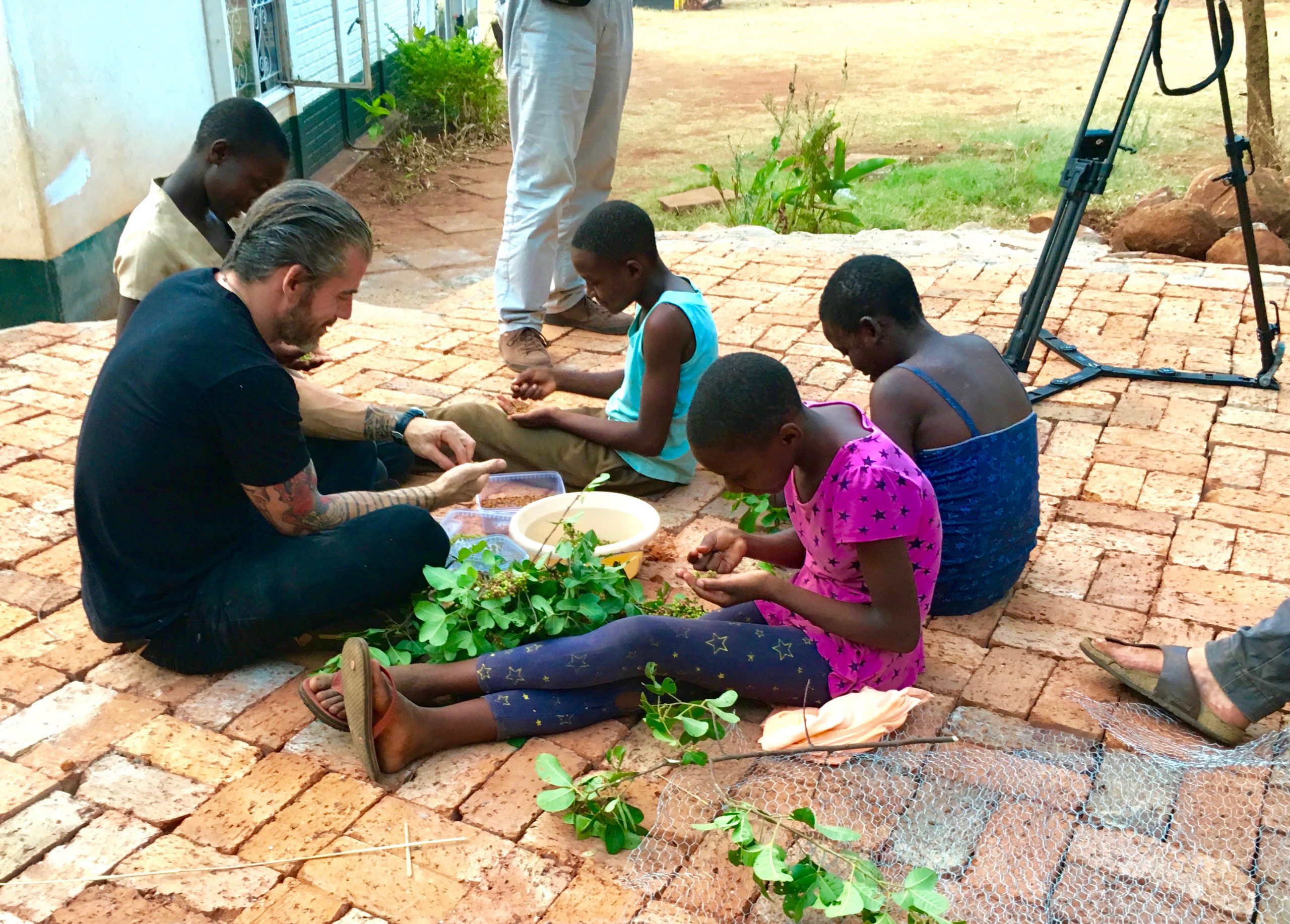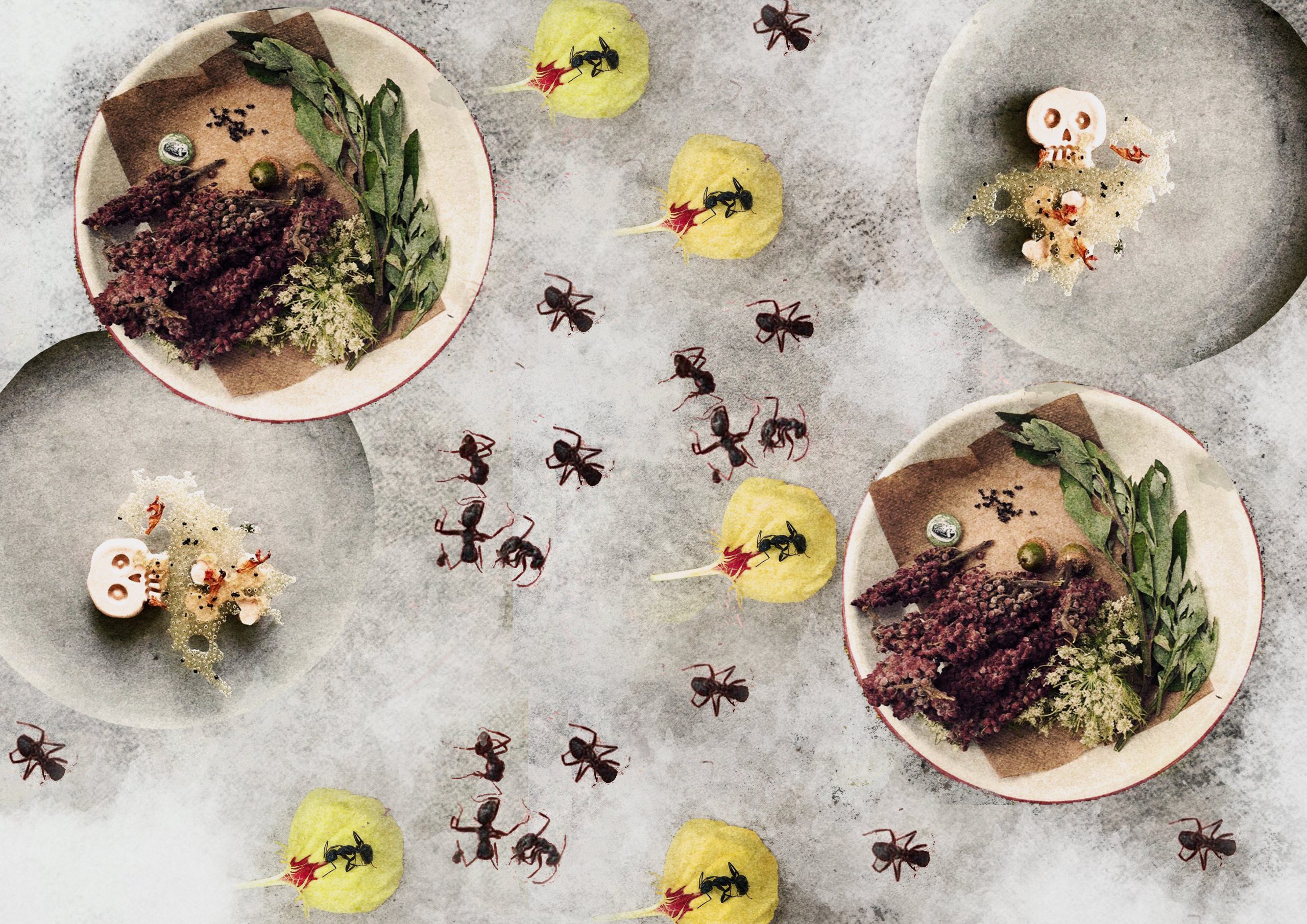Nordic Food Lab: On the Hunt for Honey Ants in the Australian Outback
Once you get beyond the sounds of the four elderly ladies and their crowbars in the dirt, out of range of their colorful dresses, the outback looks the same in every direction: flat, scrubby, semi-arid, the earth cracked and full of new green after the recent rain. And no sign of a road or car.
I keep a sort of intuitive compass, which eventually reveals Wendy’s white car through a gap in the acacias off to the left. The doors and trunk are open. I rummage for a plastic can and return to the others.
Now I am enjoying the mild discomfort of not quite knowing where to go. I can feel my senses open, noticing broken branches and crushed nightshades where we set out, the angle of the sun, the direction of the dry riverbed. I come across the yawakiyi tree Ruth showed me on the way out – it is late for them but there are still a few sweet black berries, warm in the sun, with one big seed and a thick pasty flesh, like wheatgrass and dark sugar. From here the desert fuschia spread out in wayward curves and lines. Their crimson blooms last for a brief time after rain, holding a drop of clear, fragrant nectar in the small bulb at the base of the petals below the ovary. I remember Coral picking the flowers and sucking on them as we walked.

“They usually build a nest near the manja or the miinypa where the branches curve down, because when the rains come and the flowers come out, that’s where they get food.”
“Just like us,” I say, following Coral’s lead, picking the tender blossoms and sucking out the ambrosia. I stop to take notes and a picture. Andreas, our filmmaker, comes up behind. “Taste this,” I say, picking him one intact. We stood, mouths agape, stupefied. Coral was already back on the hunt. She wandered with a purpose, then sat, observed, and waited. Then she got back up and resumed.
None of these women, nor any of their community, can get lost here – orientation to their land and to each other is fundamental to their living. Knowledge of cardinal directions is imbued into them from birth, just as I gained “left” and “right”.
Now I’m standing by myself, still entranced by the single drops, and the mild vegetal flavor and springy texture of the flower itself.

Coral
After picking my way through the miinypa, I catch sight of Ruth’s pink and blue in the scrub off to the left, and hear Tess’s cackle above the sounds of digging. What a group we’ve found. They’re all between their sixties and nineties. Coral, the eldest, is a great-grandmother.
“I got it,” I say to Tess, coming up to the camp, holding out the plastic container. “Yeah, that’s good, we found another, too.” There is now a decent-sized hole with a corresponding pile of red dirt. Ben and Coral sit on the other side of the hole observing, Andreas is up filming, and Ruth has found a shady spot not far off.
We’re in the desert outside Yuendumu, a town of a few hundred people three hours northwest of Alice Springs. We are in Warlpiri country to learn about the insects of the Australian desert. Wendy, our contact at the local school, has rounded up her friends, some of whom also paint at the arts centre where we’re staying, to take us out honey-anting.
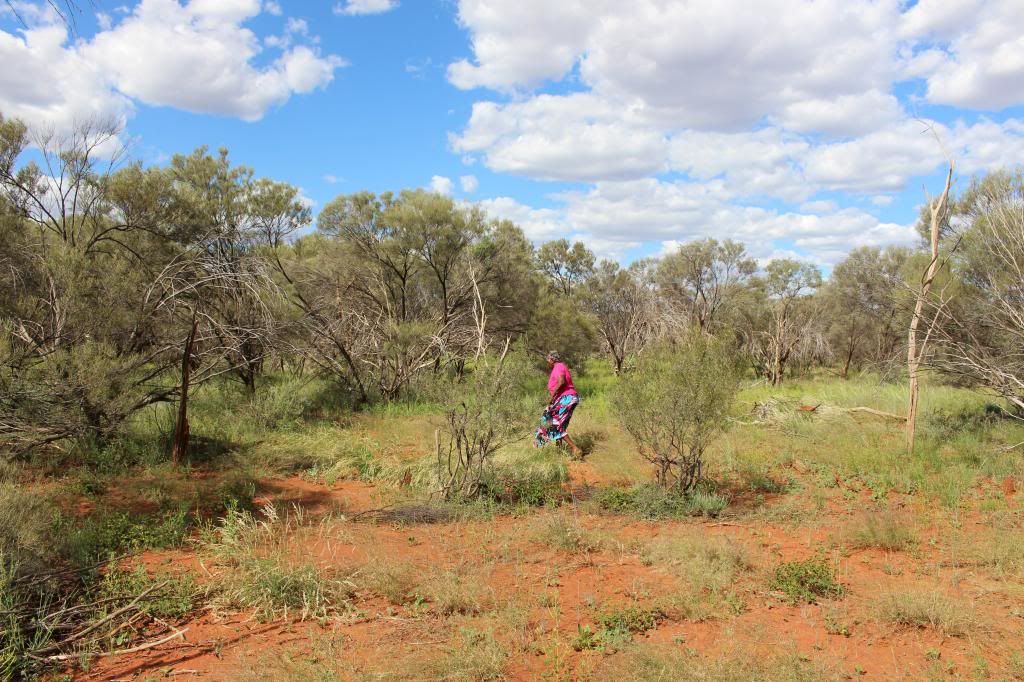
Ruth
“Do you think we should find some soon?” Wendy asks Tess, who has taken charge of the digging, methodically loosening shards of earth with her long iron crowbar, the tool of choice around these parts.
“Oh, yes, there are some here, we will find them,” says Tess, switching out crowbar for bucket to lift up excess earth. I get in there, on my knees, to scoop out the rest with my hands. We found the site by tracking some of the worker ants with yellow stripes on their abdomens to the nest, right next to a small desert fuschia.
I’m thinking of all the flavors we have already tasted in the desert today. “What do the honey ants taste like to you, Tess?”
“They taste like different things. If they eat manja, the honey is light. If they eat miinypa, the honey is darker. But they are all sweet!”
We have seen some of the yellow flowers of the manja – also called mulga, a type of acacia (Acacia aneura). But the miinypa, the desert fuschia (Eremophila gilesii), is really out in bloom.

“Aha!” shouts Tess, and the site is alive as she begins lifting the first specimens out of the hole. The honey ants are also known as “repletes” or “plerergates,” designated worker ants that are fed nectar in times of plenty until their abdomens engorge and they become living larders. In times of scarcity, the workers induce them to regurgitate some of the concentrated energy stored in their swollen bodies. They hang in long chambers called galleries, tended to by other workers and moved up or down based on the moisture in the soil. This is also why it is easier to find them after a rain – because the workers move them higher in the hive to prevent them being drowned in the rising groundwater, which means only about a one-metre dig instead of three.
Once we have a few, we ask Tess to show us how she eats them. She takes one gently but swiftly by the head, and sucks out the dark liquid from the back. She puts the body with its collapsed abdomen back down on the soil, and it starts to scramble back down into the hole. It is unclear how long, or even whether, it will survive the ordeal.
Ben and I each take one up. The moment I touch the end of the abdomen to my tongue, I am struck with an electric, trigeminal sensation, even before rupturing the golden orb. I don’t know why, but it’s exciting. Then I suck. It takes a surprising amount of force to break something so small, but once that threshold is met, the membrane bursts and the contents rush and coat the inside of my mouth in a living wave of ancient pleasure. It is indeed like a dark honey, sweet but also sour, with a lingering flavor like wild strawberries, semi-dried in the sun. And they all taste different.

Tess keeps hauling them up. Ruth has come over from her shade, Wendy is getting in there, even Andreas puts the camera aside for a taste. We maybe find 20 or 25 in all, and this, Tess assures us, is a small harvest. Sometimes, they will fill a whole pail, especially if the children aren’t along for the trip. What I keep thinking about is the connection between the clear, delicate, floral nectar of the desert fuschia and the dark, rich, sour honey it is transformed into as part of the ants’ life process.
We make our way back to Wendy’s car to continue the hunt. We head to another area, a place called Yurrampi Jukurrpa, or, roughly translated, “Honey Ant Dreaming.” Huge round boulders form hills that rise abruptly out of the flat landscape. Here we find bushes and bushes full of marnikiji, small oval berries deep purple in color with small white speckles. They are brighter than the yawakiyi, springy and fruity when fresh. I also find some that have begun to shrivel on the plant, almost like raisins, with an intense, guava-like taste. I collect with Tess. She tells me about her mother and how she taught her how to gather fruits like the yawakiyi and marnikiji and insects like the honey ants, as well as many other plants and animals. She is trying to keep these foods in her children’s diet, too.
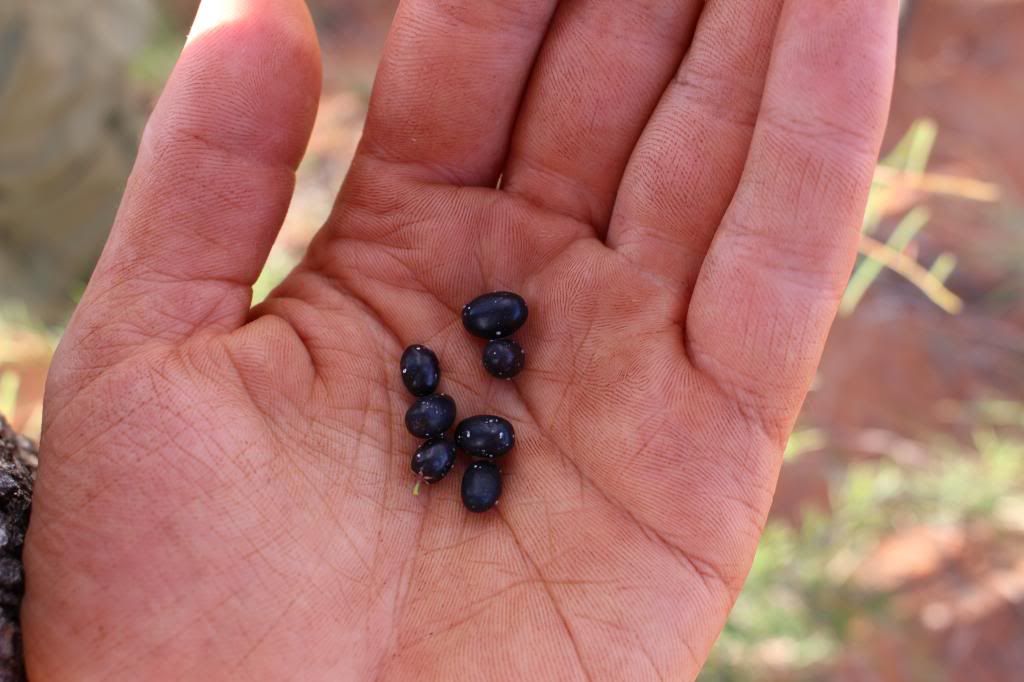
As we head back toward the car and the sun dips lower towards the honey ants, I am still mulling over the replete and the fuschia. They make so much sense together and I want to bring them together on a plate. How beautiful and simple a dessert it would be – the clear, light sweetness of the nectar, the deep round sweetness of the ant honey, tempered by its own acidity and the fragrance and vegetal bitterness of the flower. Maybe a few of the berries we found as a garnish. I am kicking myself for not making this connection earlier, when the ingredients were available and plentiful. Who knows if we will ever have them again, let alone together?
I look back towards the bouldered hills falling into their own shadow, the honey ant monoliths stalking the horizon. Earlier, Tess told me these are the honey ants. It was not a gesture of likeness but a confirmation of identity. They are the same ones we dug up and ate. It does not matter that the former are small and the latter large, the first liquid and the later solid, that they are a 45-minute drive apart. Their matters differ, as do their scales, but their essential form connects them inextricably in time and place.
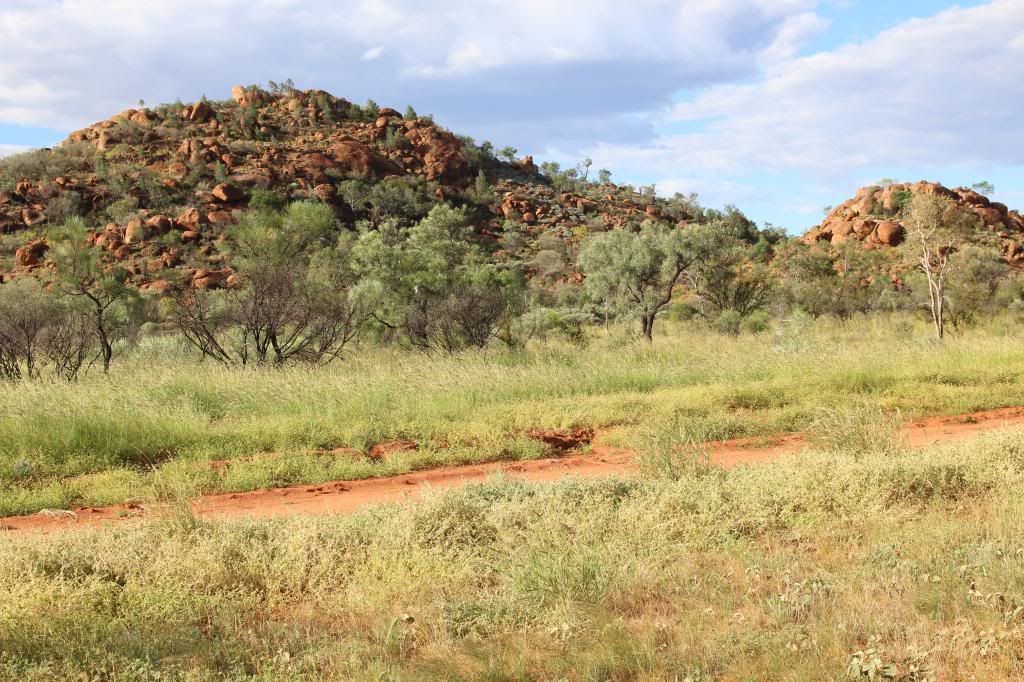
Tess tapped into these relationships through stories learned from her parents and grandparents, filled in with her own experience. I can’t pretend to understand the Warlpiri concept of “Jukurrpa” in any profound way, but I think I understand enough to know that “Dreaming” or “Dreamtime,” which imply unconsciousness and mystery, don’t really get at the heart of it. Wendy’s husband Frank suggested something more like “cosmology” – a rich, intricate and highly ordered system of stories, emerging in the landscape and used to make sense of the world.
Something clicks as we come back into town, and I start to notice the yurrampi on murals and signs where I didn’t before. We drop off the ladies of our crew and say goodbye as the sun hovers above the flatness. I stare into the sideways light and what Tess shared with me unlocks a cascade of possibilities.
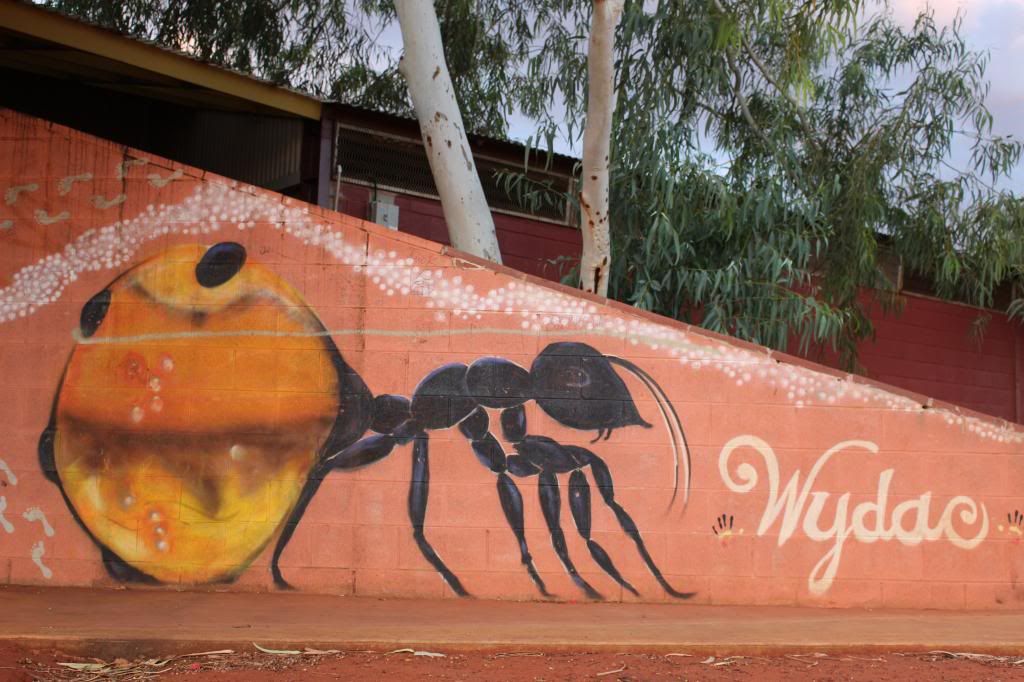
It dawns on me that in fact I have already eaten the dish I so desperately dream of making and am frustrated I cannot.
When we spend time with communities around the world to investigate the role of insects in their cuisine, we bring along a host of our own assumptions – for example, when we try to learn recipes in which the insects are “elaborated” in some way. In some cultures this concept works. But maybe ‘elaboration’ in the Australian desert region is not about “making a dish” as a mixture of ingredients brought together on a plate. It is a different type of gastronomic context altogether. The honey ants are never cooked – they are eaten immediately or saved for later feasting, but always eaten live and on their own.
And what could be done to make them better than they already are? “Making a dish” here, like connecting the honey ants in the nest and the honey ants on the hills to the fuschia and the mulga and the berries of the desert, involves eating in succession, the eating that happens over time. Maybe the gastronomic context of this place unfolds more in time, rather than what comes together at once on a plate or a hand. This is fundamentally different from how many of us today conceive of eating. Yet it is a big part of how Aboriginal communities have been eating on this continent for tens of thousands of years, and we would do well to pay attention.
In this sense, then, I have already eaten the dish. And it has sparked a larger conversation for us on the temporal elements of dishes and menus that maybe we aren’t paying close enough attention to: how a dish changes and can be made to change over time; how a menu evolves and can be guided to evolve, both over one service and over many; how a dish can be constructed outside the bounds of a single plate. And even more importantly, it reminds us how gastronomy does not just happen in restaurants and at dining tables, but also in immersion in one’s surroundings. It is doubtful that the honey ants and fuschias would ever be as delicious than when eaten straight from the nest or the plant, even if brought together. The same is true of many things.
Yet still, I dream of the honey ants and desert fuschia together in time, the nectar and the replete that it feeds. I’ve eaten it already and I never will.
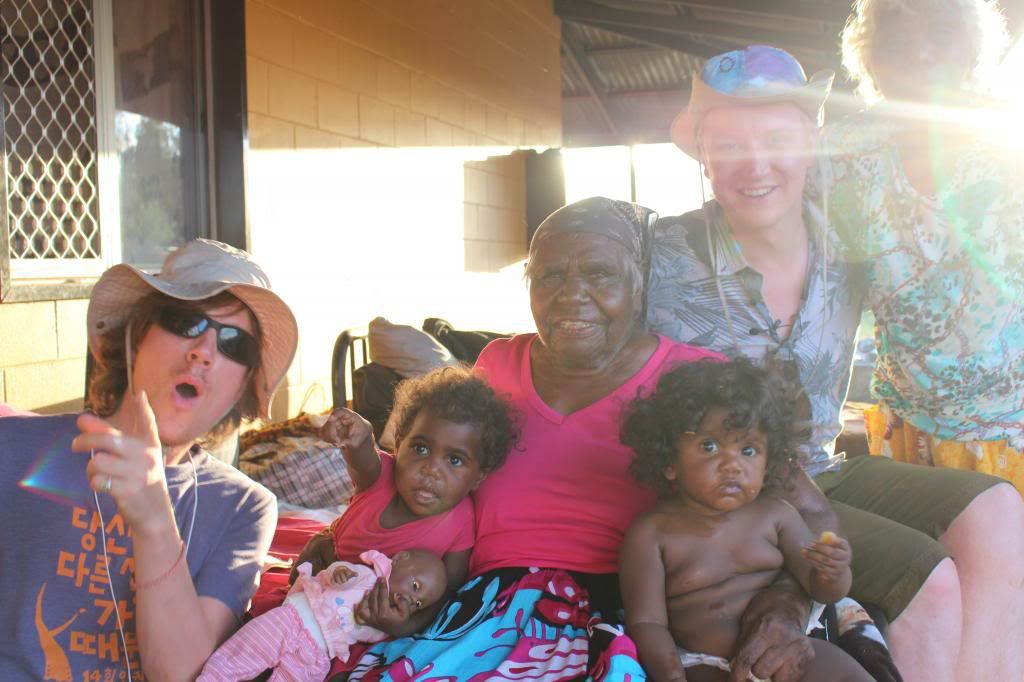
Many thanks to our honey-anting crew of Wendy Baarda, Coral Kelake, Ruth Napaljarri Stewart, and Tess Napaljarri Ross for the delicious and wise guidance, and to Frank Baarda, Cecilia Alfonso and the Warlukurlangu Artists of Yuendumu for their time and interest and help.


